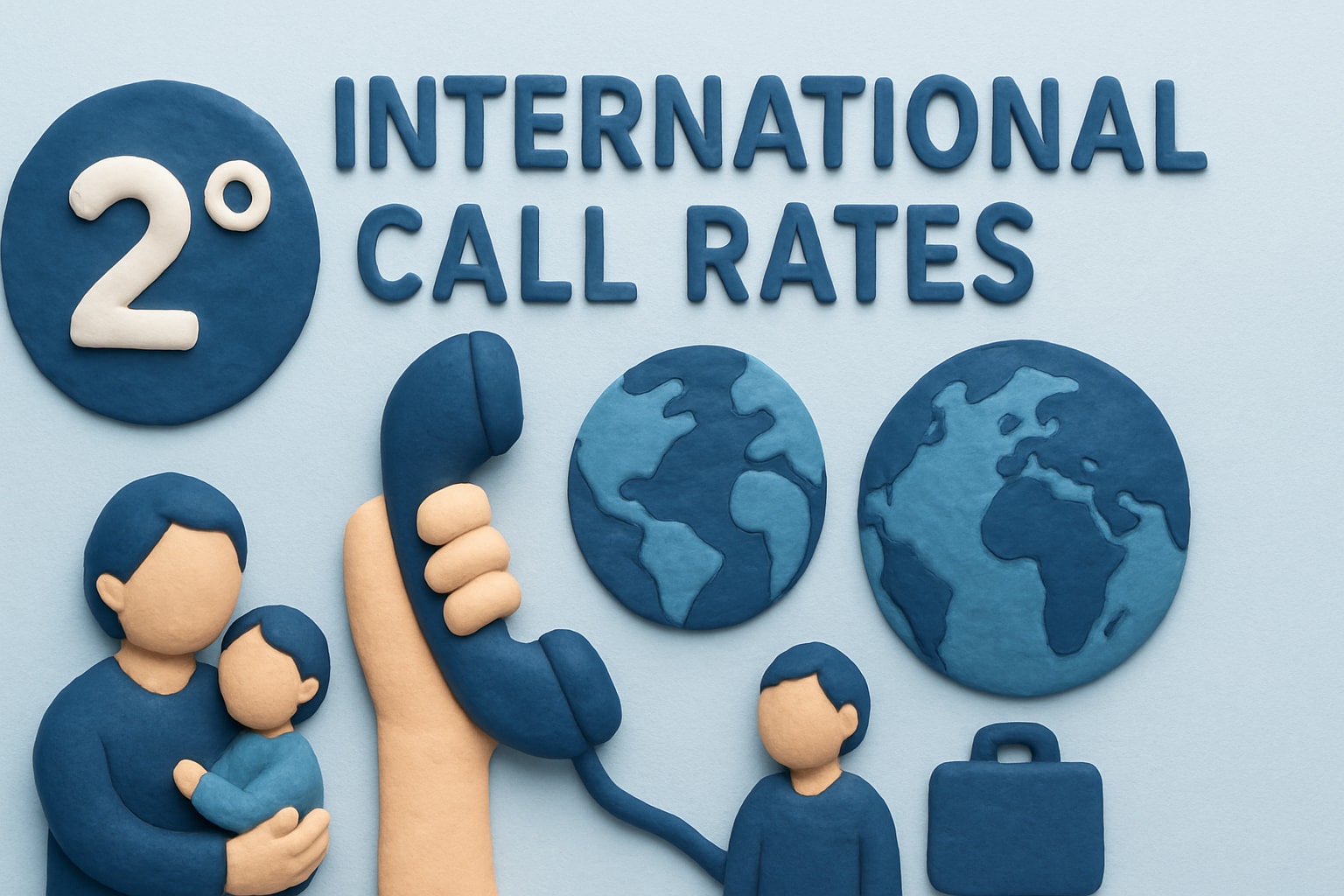
Staying in touch with loved ones, colleagues, and clients across borders is more important than ever as we move into 2025. Whether you are a frequent traveler, an expat, or running a business, affordable international calling keeps us connected globally.
This essential guide to 2 degrees international call rates will help you navigate the latest changes and make smart choices. We will break down how rates are structured, compare alternatives, and share tips to help you save money.
Ready to unlock clarity and maximize your savings? Let us dive in and explore everything you need to know for confident, cost-effective calling this year.
Understanding 2 Degrees International Call Rates
Staying in touch with loved ones or doing business overseas can feel confusing when it comes to costs. That’s where understanding 2 degrees international call rates becomes essential for anyone calling abroad in 2025.
Let’s explore what these rates mean, how they’re set, and where to find the latest updates, so you can connect with confidence and avoid surprises.
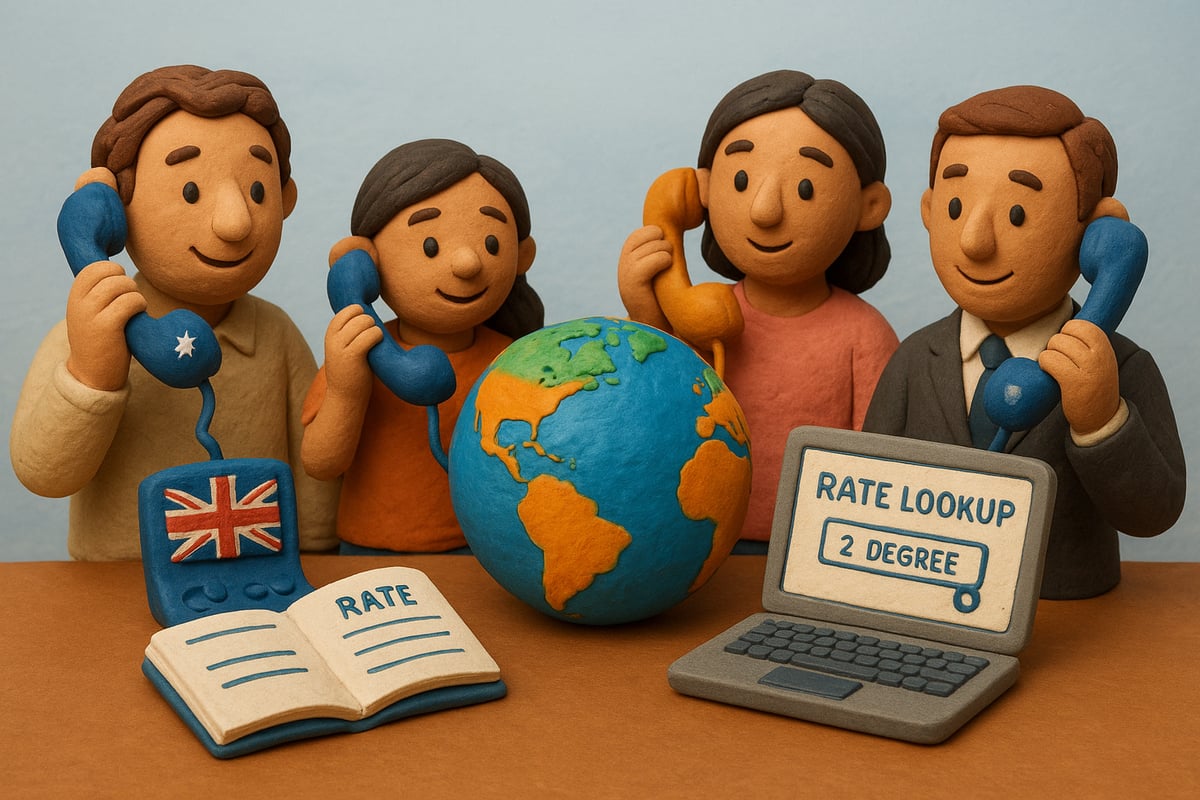
What Are International Call Rates?
International call rates are the charges you pay your mobile provider to call someone outside your home country. These rates depend on several factors, such as the destination country, whether you’re calling a landline or a mobile, and sometimes the time of day.
For example, calling a UK landline from New Zealand may cost less than calling an Indian mobile number. This is because telecom agreements, network fees, and demand all influence the rate. Here’s a quick comparison:
| Destination | Landline (per min) | Mobile (per min) |
|---|---|---|
| UK | Lower | Higher |
| India | Moderate | Highest |
Frequent travelers, expats, and families often rely on 2 degrees international call rates to budget their calls and avoid unexpected bills. Planning ahead helps you stay connected without breaking the bank.
How 2 Degrees Calculates International Rates
2 degrees international call rates are structured to give you clarity and choice. Generally, you’re charged per minute, and sometimes there’s a small connection fee. The rate you pay depends on the country you’re calling, the type of number (landline or mobile), and your mobile plan.
2 Degrees groups destinations into rate zones, each with its own pricing. For example, Australia and the Pacific Islands might be in one zone, while the USA is in another. Here’s an example of popular destinations:
| Country | Rate Zone | Typical Per-Minute Rate |
|---|---|---|
| Australia | Zone 1 | Lower |
| USA | Zone 2 | Moderate |
| Pacific Islands | Zone 3 | Higher |
Transparency is a priority for 2 Degrees. They publish all rates and package options online, so you can compare before you call. For the most accurate and up-to-date details, check the 2degrees International Call Rates page, which lists rates by country and available talk packs.
Where to Find the Latest 2 Degrees Rates for 2025
To stay on top of 2 degrees international call rates in 2025, always check the official 2 Degrees website. They offer easy-to-use rate lookup tools where you can enter the destination and see the exact charges for landlines and mobiles.
If you have questions, customer support is ready to help you understand the rates or guide you through adding international calling packs. Before dialing, review the rate tables and look out for any fine print, such as connection fees or special conditions for certain numbers.
2 Degrees regularly updates their rates to reflect global changes, so watch for notifications and updates in your account or via email. Keeping informed means you’ll always know what you’re paying and can make the most of your international connections, whether you’re calling family, friends, or business partners.
Key Changes to 2 Degrees International Call Rates in 2025
Staying connected globally is easier than ever, but 2 degrees international call rates are evolving in 2025. Understanding these updates helps you make the smartest choices for your calling needs. Let’s break down the most important changes you’ll see this year.
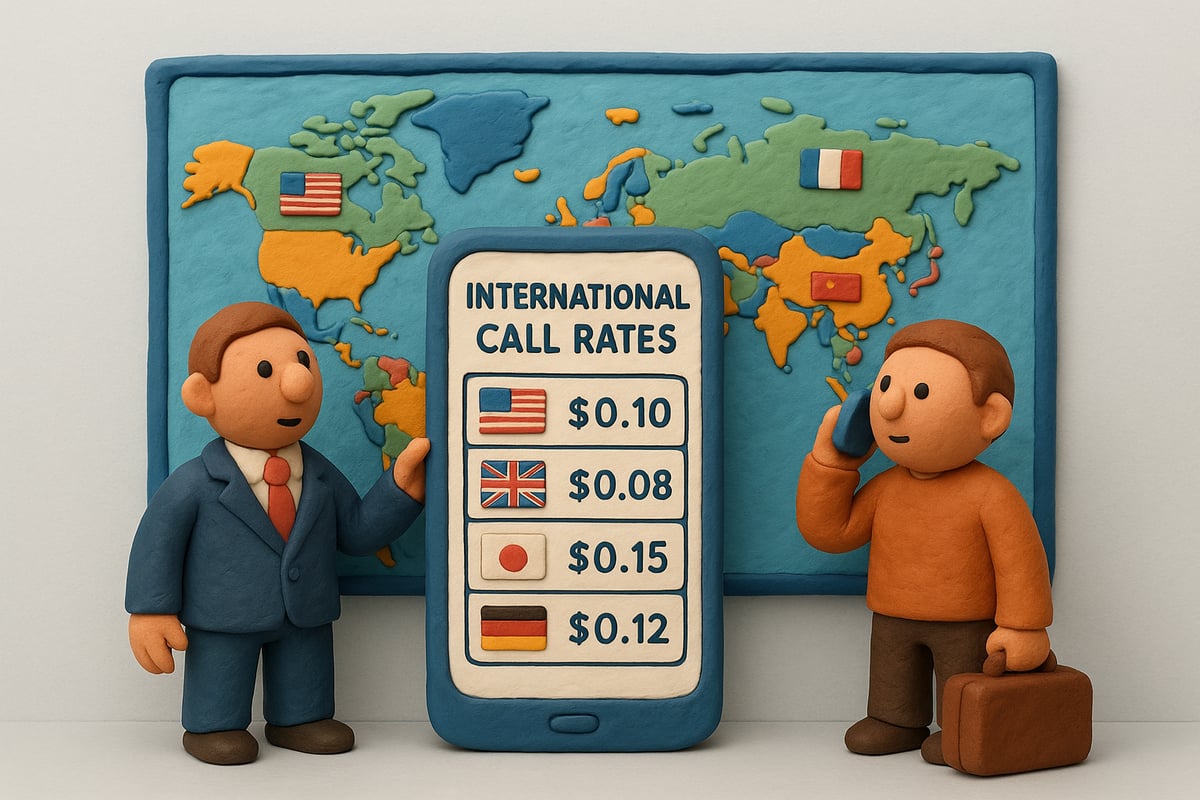
Overview of 2025 Rate Updates
This year brings several key changes to 2 degrees international call rates. Many high-traffic destinations have seen updated pricing. For example, calling India from New Zealand now costs slightly more per minute, while rates to Australia have dropped, making it more affordable for families and businesses with connections there.
2 Degrees has also reorganized its rate zones. Some countries have moved to different groups, impacting how much you pay. New destinations, such as Vietnam and South Africa, are now included in special rate zones, while a few Pacific Islands have shifted categories.
Another notable update is the introduction of new international calling packages. These offer bundled minutes at discounted rates, especially for popular destinations like the USA and the UK. If you want to explore detailed international rate changes by country, check the International call rates by country page for the latest information.
Transparency remains a priority, so all new rates are clearly listed online. Reviewing these changes regularly ensures you don’t get caught off guard.
Factors Driving Rate Changes
What’s behind the shifts in 2 degrees international call rates this year? Several key factors are at play. Global telecom agreements have changed, which affects the cost of connecting calls to certain regions. Sometimes, regulatory changes in other countries can lead to adjustments in how much providers charge.
Exchange rates also influence pricing. If the New Zealand dollar weakens against currencies like the Indian rupee or US dollar, costs to those destinations may rise. Increased demand for calling certain countries can prompt providers to renegotiate contracts or pass savings (or costs) to customers.
On the tech side, improvements in international network infrastructure have helped lower some rates, especially to places where digital connectivity is stronger. Finally, 2 Degrees is closely monitoring competitor pricing to stay attractive in the market, leading to both increases and decreases in different zones.
Impact on Consumers
How do these changes affect you? For many, the new 2 degrees international call rates mean savings when calling countries like Australia or the USA. This is especially helpful for business users or families who call regularly. However, if you often call destinations where rates have risen, you might notice a slight increase in your monthly bill.
Frequent callers to India or some Pacific Islands should consider international calling packages or add-ons to offset higher rates. Monitoring your call habits, using Wi-Fi calling, and activating spending limits can also help keep costs in check.
If you’re unsure about the impact on your specific calling patterns, review your recent usage and compare it to the new rates. Staying proactive ensures you continue to get the best value from your plan.
Comparing 2 Degrees with Other International Calling Options
Staying connected worldwide is easier than ever, but choosing the right provider can make a big difference in your experience and your wallet. Let's see how 2 degrees international call rates stack up against other options in New Zealand and beyond.
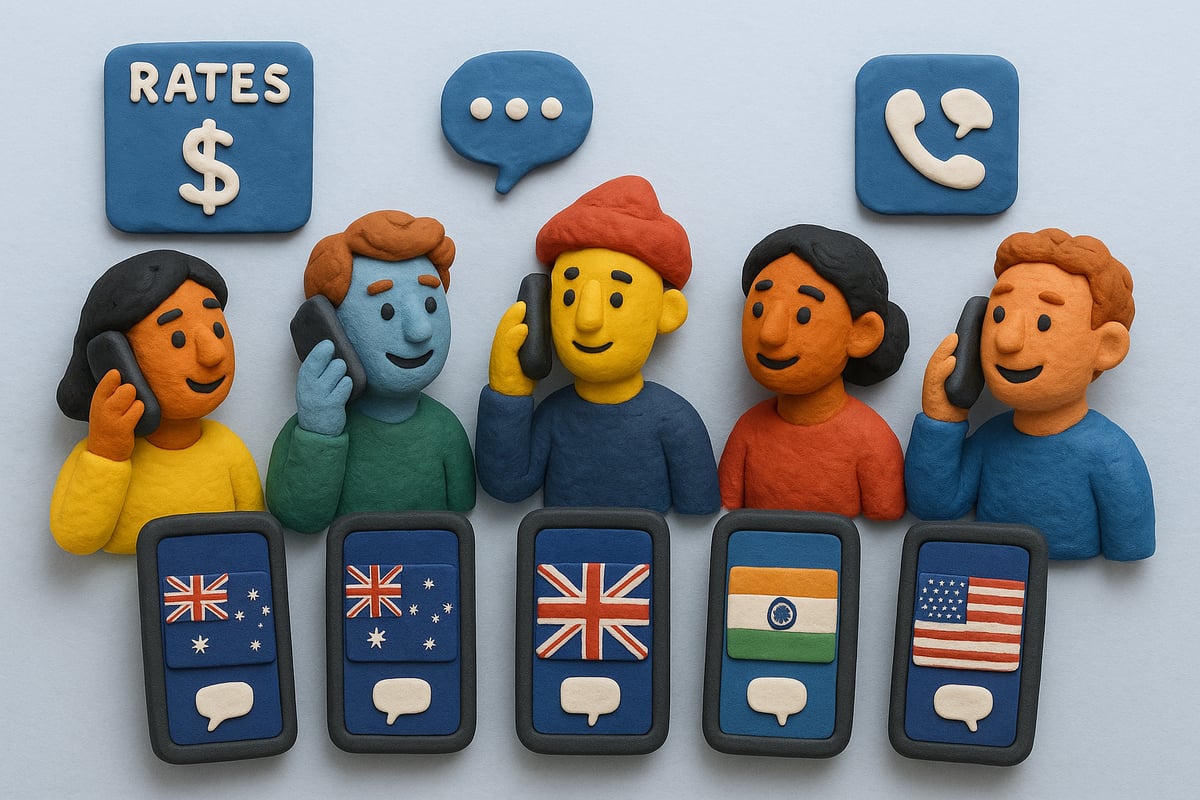
2 Degrees vs. Other NZ Mobile Providers
Comparing 2 degrees international call rates with other leading NZ mobile providers like Vodafone, Spark, and Skinny can help you spot the best value. Each provider offers different per-minute charges, connection fees, and promotional bundles.
Here's a quick table to help you compare:
| Provider | UK (per min) | Australia (per min) | India (per min) | Hidden Fees | Value-Adds |
|---|---|---|---|---|---|
| 2 Degrees | $0.89 | $0.39 | $1.49 | Few | International packs |
| Vodafone | $0.99 | $0.49 | $1.59 | Some | Roaming, bundles |
| Spark | $0.95 | $0.45 | $1.55 | Some | Data/call combos |
| Skinny | $0.90 | $0.41 | $1.50 | Few | Prepay add-ons |
Watch for hidden fees like connection charges or rounding up call durations. 2 degrees international call rates are often competitive, especially with their international packs. Customer support and satisfaction also tend to rate well, giving peace of mind to frequent callers.
Alternatives: VoIP and International Calling Apps
Beyond mobile providers, many people now use VoIP services and calling apps for international calls. Options like Skype, WhatsApp, and Viber let you connect using the internet, often at lower rates or even free for app-to-app calls.
Pros of using apps over traditional 2 degrees international call rates:
- Lower or no cost for app-to-app calls
- Good for video and group chats
- Easy to use on Wi-Fi or data
Cons:
- Call quality can vary
- Requires both parties to install the app
- Limited emergency call support
When you want more flexibility or to call from your computer, you might want to make international calls online using these services. Compare these options for your most-called countries to see if they're a good fit for your needs.
When 2 Degrees Is the Best Choice
There are moments when sticking with 2 degrees international call rates is the smartest move. If you already have a 2 Degrees plan, enjoy their coverage, or need to call regular phones (not just apps), their international packs or add-ons can deliver big savings.
For example, business users who call Australia frequently can benefit from unlimited calling packs. Families with relatives in the Pacific Islands or the USA might find 2 Degrees' rates and support especially appealing. User stories often highlight how easy it is to activate add-ons and manage costs, making 2 Degrees a reliable choice for many.
Choosing the right provider or method can feel overwhelming, but with a little comparison and the right plan, you can stay connected and keep your calling costs under control.
How to Save on 2 Degrees International Calls in 2025
Staying connected globally does not have to strain your budget. With a few smart choices, you can cut costs and get the most value from 2 degrees international call rates. Let us explore practical steps and options to help you save in 2025.
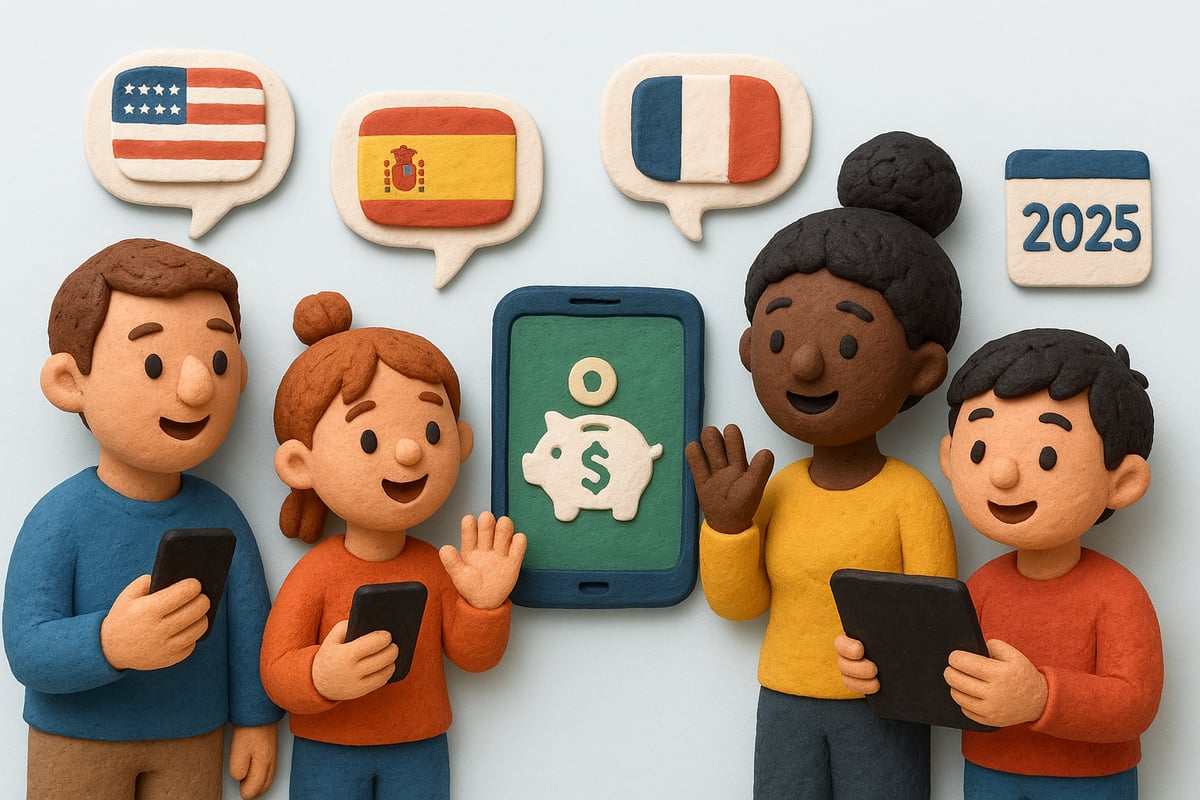
Choosing the Right 2 Degrees Plan or Add-On
The first step to saving money on 2 degrees international call rates is selecting the right calling plan or add-on. 2 Degrees offers a range of international packs designed for different calling needs. If you make frequent calls to specific countries, a monthly add-on can offer significant savings compared to pay-as-you-go rates.
To activate or manage these add-ons, you can visit the official 2 Degrees website or consult their 2degrees Roaming and International Calling guide for step-by-step instructions. Always check the details, such as included countries, expiry dates, and any usage limits. For example, a pack might give you 100 minutes to Australia and the UK each month.
If you only call abroad occasionally, compare the cost of an add-on with your expected usage. Look for any special promotions or bundles that might fit your needs. By matching your usage with the right plan, you can make the most of 2 degrees international call rates and avoid unnecessary expenses.
Smart Calling Habits to Lower Costs
Even with the best plan, your habits can make a real difference in what you spend on 2 degrees international call rates. Try calling during off-peak hours, when rates may be lower, or use Wi-Fi calling if it is available, which can help you avoid mobile data charges.
Keep an eye on your call duration. Shorter, focused calls add up to less money spent. Avoid calling premium or satellite numbers, as these often have higher rates. Set up call alerts or spending limits through your account to prevent bill shock.
By combining these habits with your chosen plan, you will notice real savings on your international calls. Small changes add up, especially over time.
Exploring Alternative Solutions for Cheaper Calls
Sometimes, the best way to save on 2 degrees international call rates is to explore other solutions. Consider using calling cards or third-party services for longer conversations, especially if you call countries not covered by your plan. These options can be more cost-effective for specific situations.
Pairing 2 Degrees with VoIP apps, like WhatsApp or Skype, can also cut costs. Make sure to compare prepaid and pay-as-you-go options to see which fits your calling pattern. Here is a quick checklist:
- Use calling cards for long calls to certain destinations.
- Combine mobile and internet-based solutions for flexibility.
- Always read the fine print to avoid hidden fees or quality issues.
Stay proactive by reviewing your usage and exploring new offers. This way, you can keep your international calling affordable and stress-free.
Frequently Asked Questions About 2 Degrees International Call Rates
Staying informed about 2 degrees international call rates can help you avoid surprises and make smarter choices when dialing overseas. Here, we answer the most common questions to help you get the best value and clarity.
How do I check the current international rates with 2 Degrees?
You can find the latest 2 degrees international call rates on the official 2 Degrees website. Use their rate lookup tool or contact customer support for up-to-date information before making a call.
Are there extra fees besides per-minute rates?
Most 2 Degrees plans bill international calls per minute. Some calls may include a connection fee, so always review the fine print in the rate table to understand the total cost.
Can I use international packs while roaming?
Generally, international calling packs are designed for use while you are in New Zealand. When roaming, different rates and rules apply, so check with 2 Degrees to avoid unexpected charges.
What happens if I call a country not listed in my pack?
If you dial a country not included in your international pack, standard 2 degrees international call rates will apply. Always verify the included countries before calling.
How are calls to mobiles vs. landlines charged?
Charges can vary between mobiles and landlines. For example, calling a mobile in Australia might cost more than a landline. For specifics, see the Cheap calls to Australia page for up-to-date examples.
What are the best ways to avoid bill shock?
Monitor your usage through the 2 Degrees app, set up call alerts, and always check the latest 2 degrees international call rates before dialing. Consider using add-ons or bundles for frequent calls.
Where can I get help if I have issues with international calls?
If you have any problems or billing questions, reach out to 2 Degrees customer support. They can clarify your charges, explain rate details, and help you resolve issues quickly.
Do I need to use a country code for every international call?
Yes, you must dial the correct country code before the number. If you are unsure, use a country code lookup guide to find the right code for your destination.
The Future of International Calling: Trends and Predictions for 2025
Staying connected globally is evolving fast, and 2 degrees international call rates are at the heart of these changes. As we look ahead to 2025, technology and shifting consumer needs are redefining how we reach loved ones, colleagues, and clients across borders.
One of the biggest trends is the rise of internet-based calling options. More people are using Wi-Fi and data-driven services for international communication. This shift often leads to lower costs and clearer calls, especially as HD voice technology becomes mainstream. At the same time, eSIMs and digital-only mobile plans are making it easier to switch providers or use international numbers without swapping physical SIM cards.
Competition among New Zealand mobile providers is also heating up. As companies compete for your business, we can expect ongoing adjustments to 2 degrees international call rates. Market pressure might push rates even lower for popular destinations, or introduce unlimited international calling packages for specific countries.
Regulations and global telecom agreements play a key role in shaping these changes. New rules may encourage more transparency or cap certain fees, making it easier for you to understand what you are paying for. Technology improvements, such as stronger security protocols, will also boost the quality and privacy of your calls.
How can you make the most of these trends? Stay proactive! Compare rates regularly, watch for new deals, and consider emerging options like eSIMs. For a broader market view and tips on finding the most cost-effective providers, check out this analysis of the cheapest international calling rates for 2025.
By keeping an eye on updates and being willing to adapt, you can ensure you always get the best value from 2 degrees international call rates, no matter how the future unfolds.
Now that you’ve got a clear picture of 2 Degrees international call rates for 2025 and some solid tips for saving money, why not put your knowledge to good use? With ZippCall, you and I can stay connected with loved ones or colleagues around the globe—whether you prefer calling from your web browser or from your phone. There’s no need to commit to subscriptions or worry about hidden fees; just pay as you go and enjoy affordable rates in over 200 countries. Ready to make your next international call simpler and cheaper? Start Calling
Ready to Try ZippCall?
Make affordable international calls on web, iPhone, and Android devices. Crystal-clear quality with competitive rates.
1 minute setup. No subscription required.